Do you know about Chuo Ward in Tokyo? This central ward is one of Tokyo’s 23, offering a diverse range of neighborhoods and plenty of things to see and do. From the historic streets of Nihonbashi to the bustling markets of Tsukiji, Chuo Ward is full of exciting experiences.
Dive into our ultimate Chuo Ward guide to learn about its unique areas, top attractions, fascinating history, and recommended accommodations. Discover all the best that Chuo Ward has to offer.
A Quick Primer to Chuo Ward

Among the 23 special wards of Tokyo, there is only one area that proudly calls itself “Chuo Ward.” “Chuo” means “centre,” and Chuo Ward is literally located in the middle of Tokyo. It is a sophisticated area with first-class office districts such as Tokyo Station, Ginza, and Nihonbashi, as well as a downtown area lined with department stores and luxury brand stores.
However, because it is central, along with Chiyoda Ward, it has become full of office buildings and is losing much of its function as a residential area. The difference between the daytime and nighttime population is quite large. While there are plenty of restaurants and pubs to feed the salarymen during the day, at night there are only 24-hour convenience stores, lunch box shops, and pubs where the salarymen hang out after work.
There are few supermarkets or shopping streets that offer a sense of daily life. In recent years, however, high-rise condominium towers have sprung up in the area, and high-income families are beginning to move in, taking advantage of the trend to return to the city centre.
On the other hand, there are markets with a long history, such as the Tsukiji Market. The reclaimed areas of Kachidoki, Tsukishima, and Harumi, located across the Kachidokibashi Bridge from Harumi-dori Avenue, used to be a downtown area with rows of small, narrow tenement houses.
Over time, these areas have transformed into celebrity towns with high-rise condominiums. Despite these changes, the connection to Edogawa’s traditional atmosphere remains strong.
Living in Chuo Ward
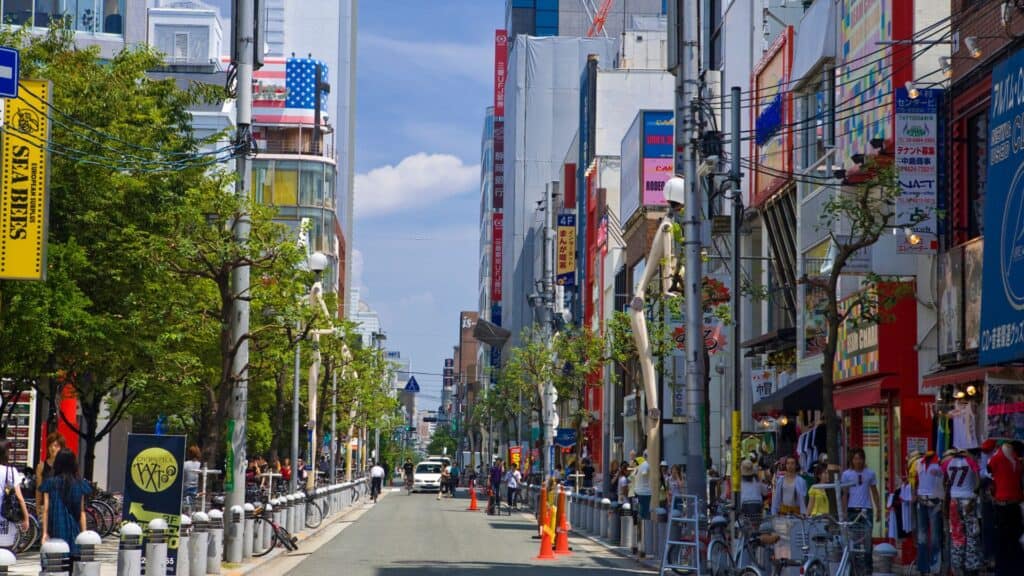
Chuo City is home to many first-class towns such as Ginza and Nihonbashi. However, if you delve into the history of Edo Tokyo, you will find that even these areas used to be downtowns. The image of Chuo City residents is probably a mixture of the Edo downtown natives and the new affluent class who live in townhouses.
There are a few high-rise condominiums in Suitengumae and Hamacho, and a few more in Tsukuda, Kachidoki, and Harumi, but the prices are too high for ordinary salarymen to afford. The main residents here are probably doctors, lawyers, and bureaucrats. These diverse demographics add to the unique blend of modernity and tradition, much like the area’s connection to Edogawa’s cultural roots.
History of Chuo Ward
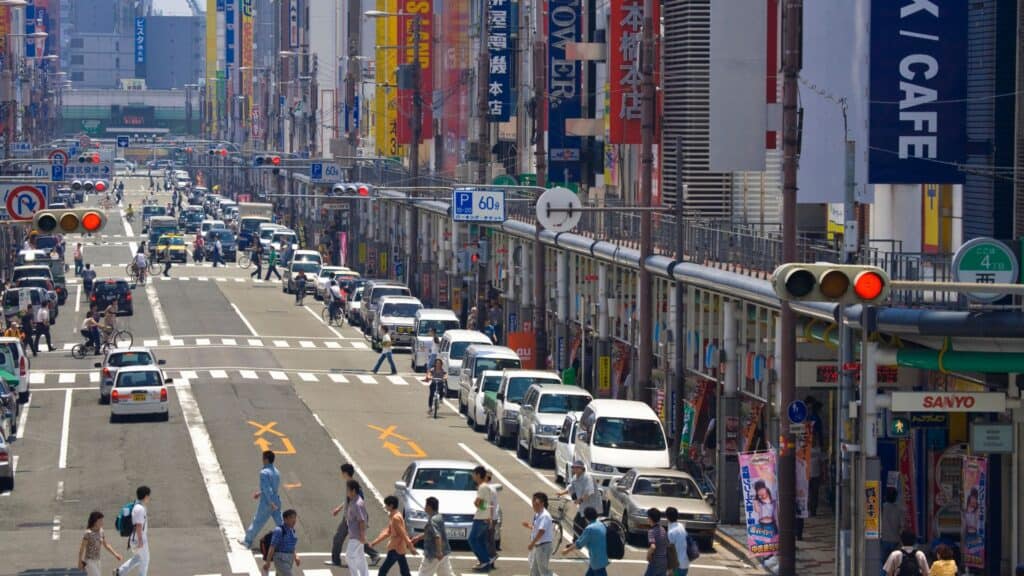
Tokyo’s Chuo Ward is located on the southeast side of the Imperial Palace and is one of the “three central wards” of Tokyo, along with Chiyoda and Minato Wards. It is divided into Yaesu, Ginza, Tsukiji, Nihonbashi, Tsukishima, and Kachidoki districts.
The area of the ward is not so large, and most of the areas facing Tokyo Bay are artificial islands that were reclaimed after the modern era. Nihonbashi and Kyobashi are the original downtown areas that have existed since the Edo period, and although they have become high-end, sophisticated areas, it is not unusual to find long-established stores that have been in this area for several hundred years.
The new affluent class, who consider this area a brand because of its deep historical background and the name “Chuo Ward,” have moved into tower condominiums that are being built one after another. The population had fallen to the 60,000 level in the 1990s but has now more than doubled to nearly 150,000.
The effect of the new residents has been to push up the average annual income of ward residents, which has risen to 5.56 million yen in Chuo Ward, ranking fourth among the 23 wards. This trend, akin to the growth seen in Edogawa, is expected to continue.
Characteristics of Chuo Ward
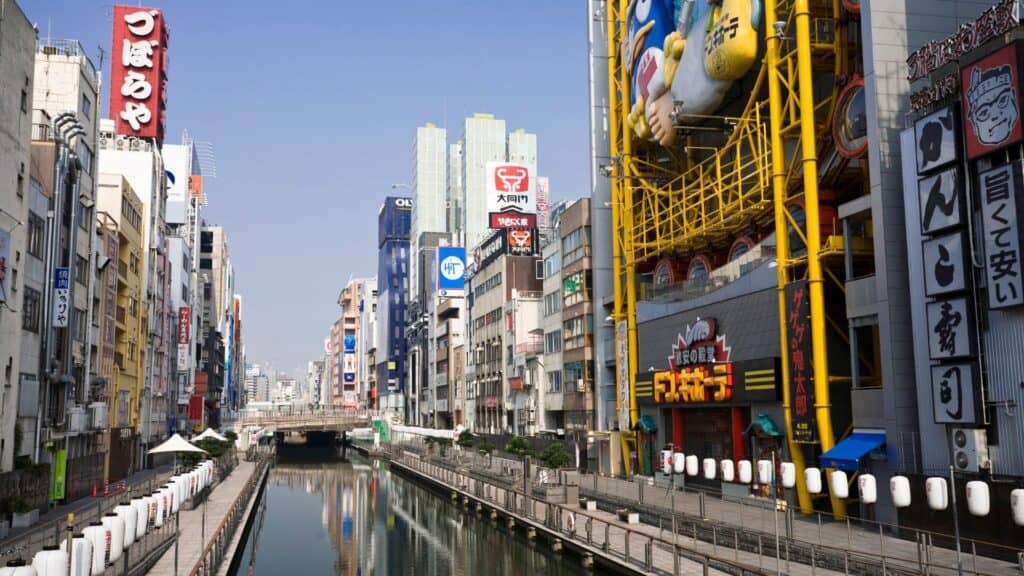
The Centre of Japanese Culture, Commerce, and Information
Chuo City has a long history, with Ginza, one of Japan’s leading shopping areas, and Nihonbashi, the starting point of the highway to various parts of Japan. Tsukiji, the centre of food culture, Ningyocho, where traditional shopping streets remain, and Tsukuda and Tsukishima, facing the Sumida River and Tokyo Bay, allow visitors to enjoy strolling and eating in the elegant townscape.
While being a centre of a culture where various traditional performing arts and fine arts can be appreciated, the area is also home to a number of new spots such as large-scale commercial facilities. This dynamic blend is reminiscent of the cultural vibrancy found in Edogawa.
Tradition and Cutting-Edge Coexist
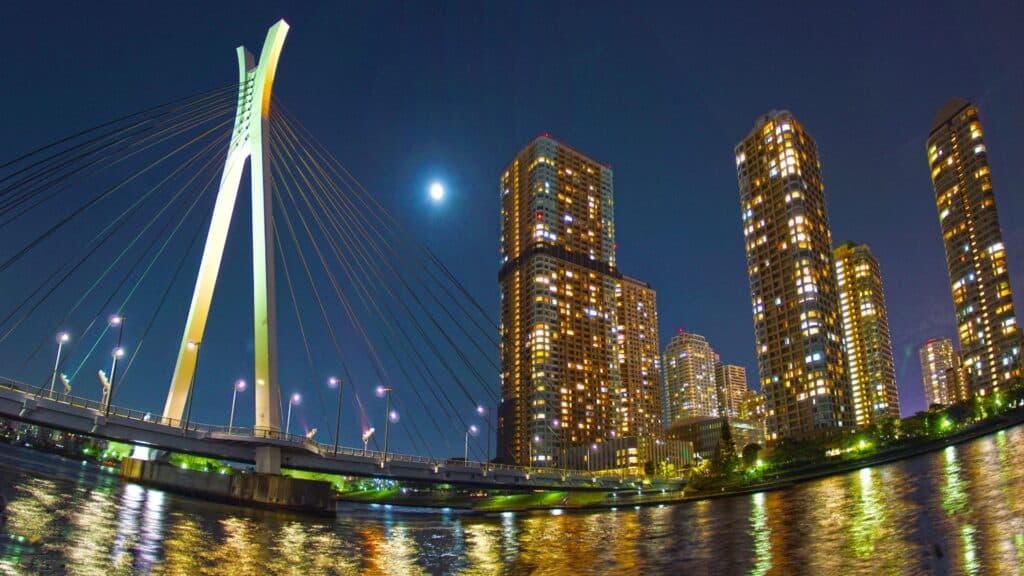
In Chuo City, as the city continues to develop with the times, traditional and famous buildings are being preserved. Chuo City has been developing a town with a rich atmosphere that makes the most of these buildings while preserving traditional architectural masterpieces.
The streetscape, where the old and the new coexist in harmony with traditional and modern high-rise buildings, is a valuable landscape that Chuo City is proud of. This balance of preservation and progress is also a characteristic shared with Edogawa.
Full of Seasonal Delights
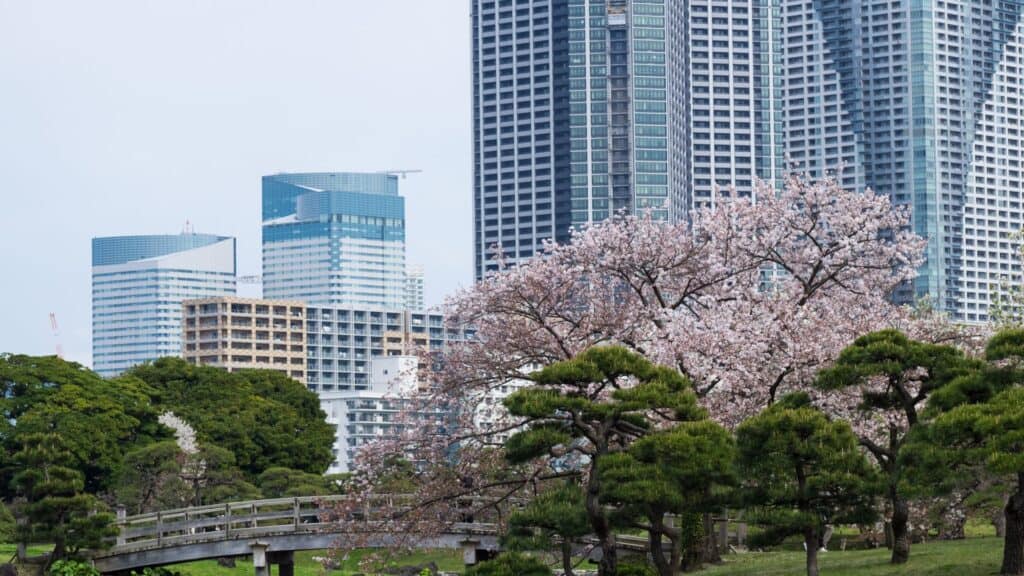
Chuo City, which has a strong image of a bustling building district, also has its own seasonal expressions. In spring, cherry blossoms and other flowers bloom here and there, attracting many people, and in summer, visitors can enjoy strolling along the waterfront and beer gardens on the rooftops of buildings.
In autumn, the streets are decorated with red and yellow leaves, and in winter, the main streets and commercial facilities are romantically decorated with gorgeous illuminations. As you can see, Chuo City is filled with a wide variety of enjoyment all year round, much like the seasonal festivities celebrated in Edogawa.
Areas in Chuo Ward
Along the JR Line
Tokyo 東京
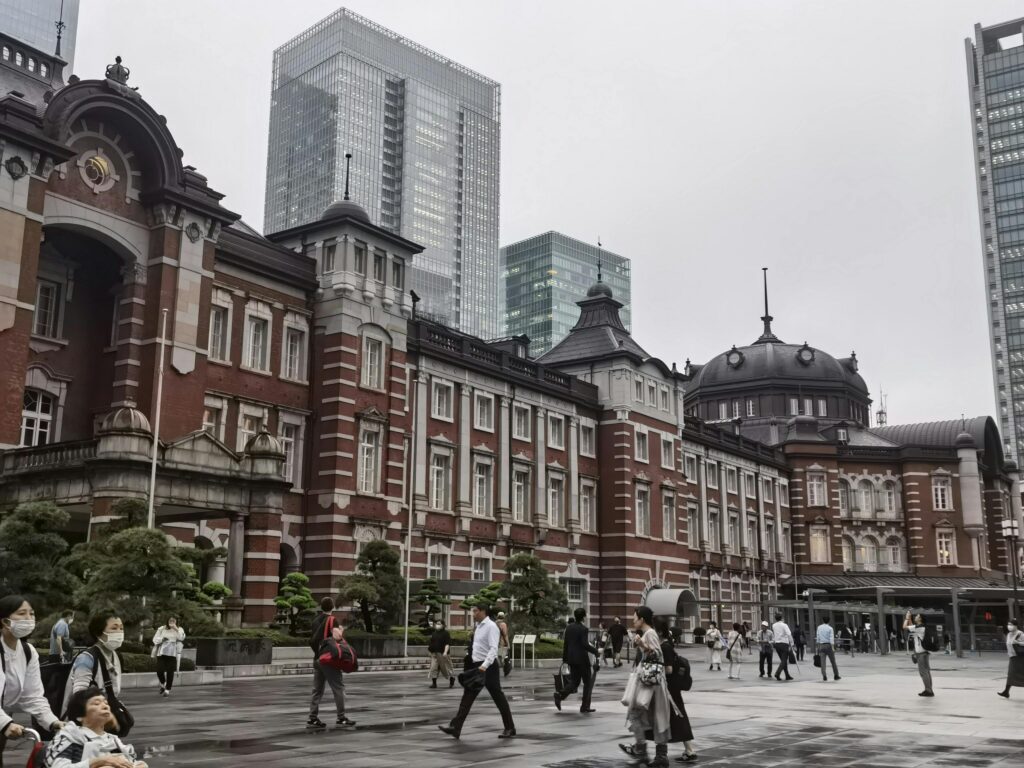
Tokyo Station Yaesu Exit belongs to Chuo Ward. The name comes from Jan Joosten, a Dutch navigator who married a Japanese and lived in Edo. Unlike the Marunouchi side, the Yaesu side of the station has a motley assortment of buildings housing salaried workers and a few seedy stores catering to the geek crowd. The Yaesu underground shopping mall is one of the few of its kind in Tokyo. The area’s eclectic mix mirrors the diversity found in Edogawa.
Yurakucho 有楽町

The history of Yurakucho is depicted in the movie “Carmen 1945”; after the war, it was called “Rakucho” and was a place where pampered girls hung out with the Occupation Forces to have their spring break. Since the area is adjacent to Ginza, there are many high-class restaurants, but the area under the underpass has turned completely into a black market of the postwar period. Marusan Yokocho and Nishi-Ginza JR Center are full of chaotic elements, reminiscent of the historical market scenes in Edogawa.
Kanda 神田
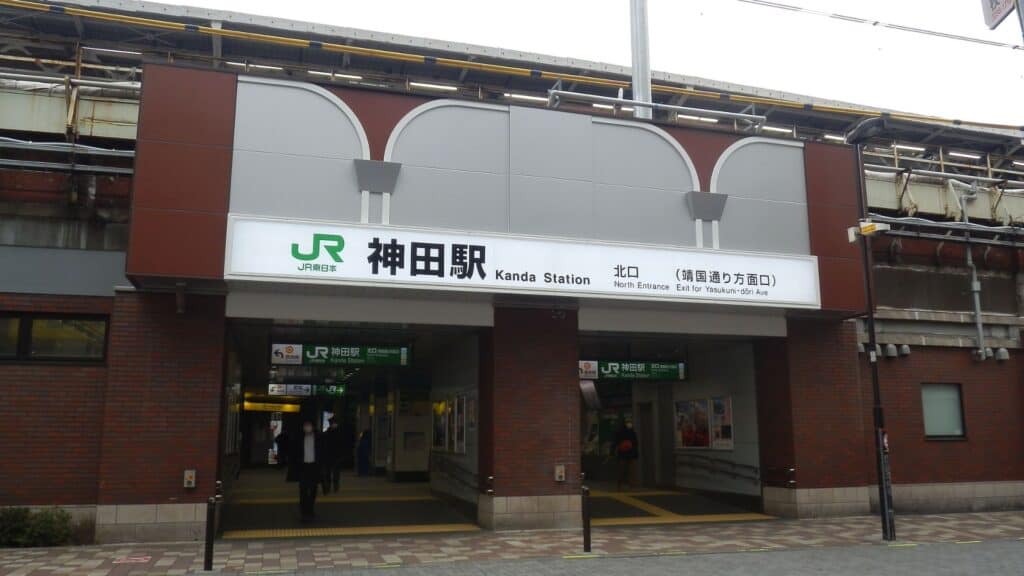
Imagawa Koji, a postwar under-underpass eating and drinking district on the south side of the station, has a ward boundary running down the middle of the alley, with the northern half in Kajicho, Chiyoda-ku, and the southern half in Nihonbashi Hongokucho, Chuo-ku, Tokyo. This unique division of space echoes the diverse neighbourhoods of Edogawa.
Shinbashi 新橋

The Shinbashi station is the nearest station to some areas in Ginza 7 and 8-chome, Chuo-ku. The Nakagin Capsule Tower Building, a very famous and rare architectural work by Kisho Kurokawa, towers over the area. Such architectural marvels are akin to the landmarks found in Edogawa.
Ginza Line Stations
Ginza 銀座
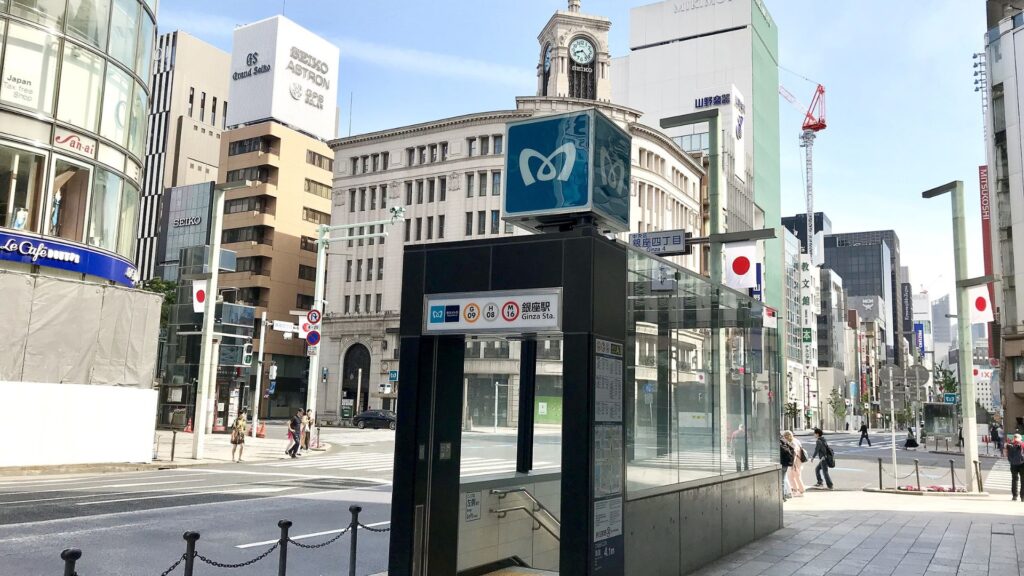
Tokyo’s leading brand town in the world. A shopping zone for the wealthy where famous brand stores from around the world gather. However, if you take a step into the back of the area, you will find Showa-era back-alley restaurants, a long-established cabaret called “Hakubara,” and even public bathhouses such as Kinshunyu and Ginza Yu, which have survived. This blend of luxury and tradition is reminiscent of Edogawa’s charm.
Kyobashi 京橋

The closest subway station to Tokyo Station on the Ginza Line. There are many local bank branches from here to the Yaesu Street area. The Police Museum is open to visitors free of charge. This area’s blend of business and history mirrors the balance seen in Edogawa.
Nihonbashi 日本橋

In addition to the grand building of Nihonbashi Takashimaya, a long-established department store along with Mitsukoshi, commercial facilities such as COREDO Nihonbashi have opened due to redevelopment in front of the station. This modern redevelopment, while preserving tradition, is similar to Edogawa’s growth.
Mitsukoshimae 三越前
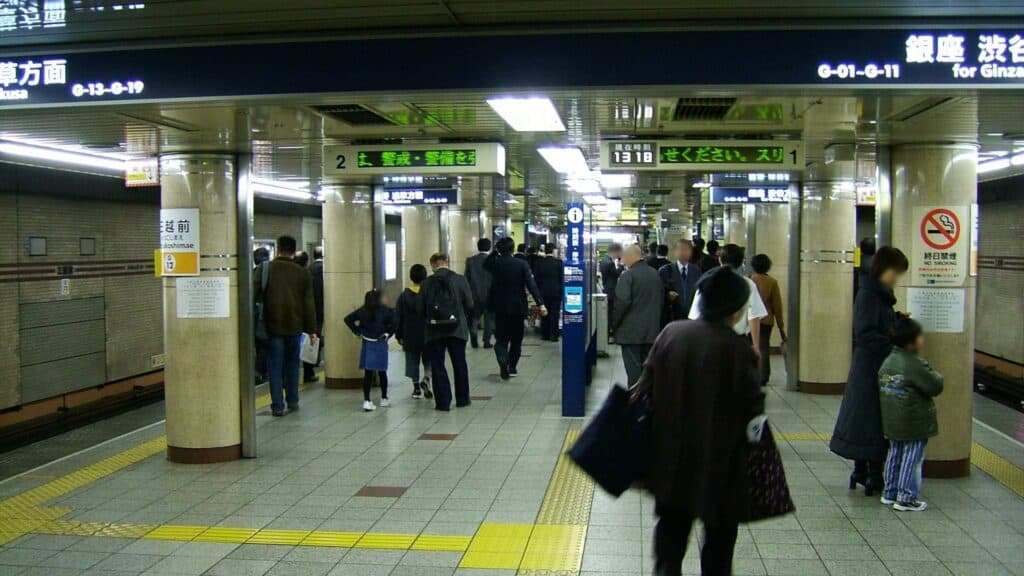
The long-established department store Mitsukoshi Nihonbashi and the Bank of Japan’s head office, which is shaped like a circle when viewed from above, give the area a stately appearance. In recent years, new commercial facilities such as COREDO Muromachi have been built, and like Nihonbashi, there are many conscious stores for elite salarymen.
Along Hibuya Line
Higashi-Ginza 東銀座
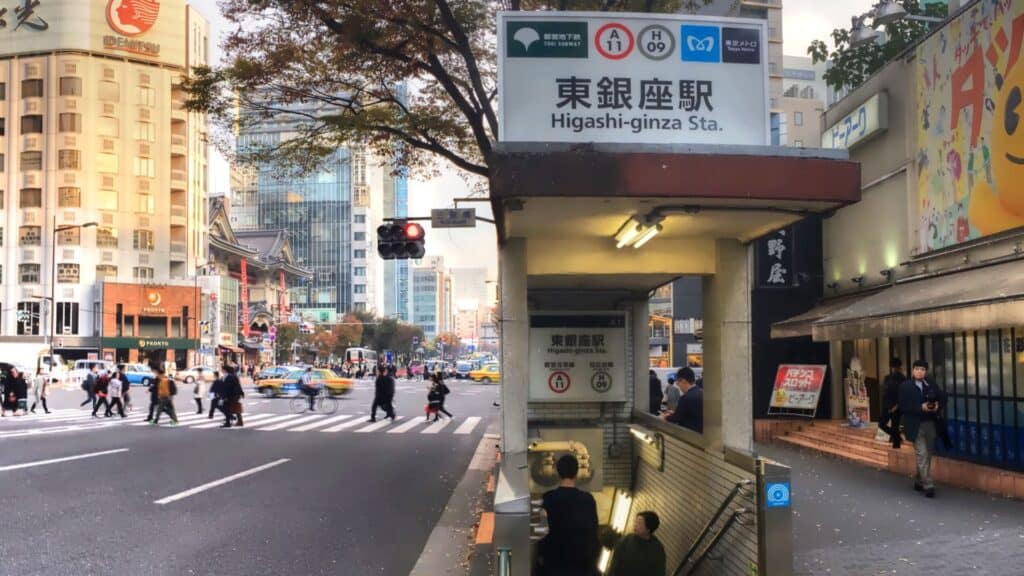
The original name of this district was Kobikicho. The Kabuki-za Theatre, the centre of Japanese traditional performing arts, is located here and attracts crowds of elderly tourists all year round. The address is part of Ginza, but there are more restaurants and small offices than large commercial buildings. There are also some condominiums, factories, and row houses here and there. This mix of cultural landmarks and everyday life is similar to Edogawa’s atmosphere.
Tsukiji 築地

Tsukiji Honganji Temple and St. Luke’s International Hospital are landmarks of the city. The well-known Tsukiji Market has suspended its relocation plan. It is a popular tourist spot that is flooded with visitors all year round, but the rundown condition of the outer market is also a sight to behold.
Overlooking the market is the Tokyo headquarters of the Asahi Shimbun, Japan’s leading self-proclaimed quality paper (Asahi Shimbun). The market’s vibrant scene is akin to the bustling areas of Edogawa.
Hatchobori 八丁堀
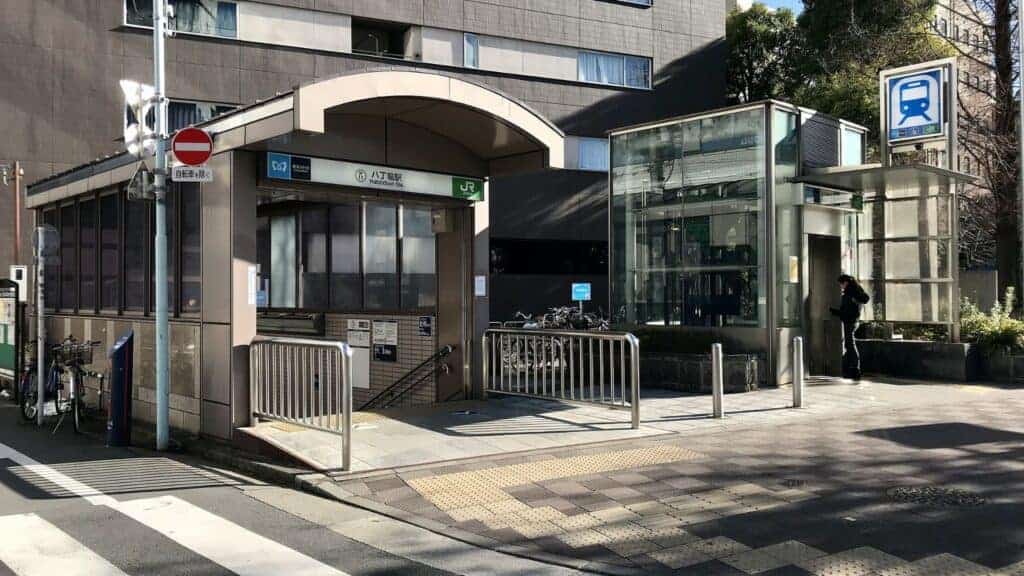
A station used by Keiyo Line residents to transfer to the Hibiya Line. The Minato 2-chome neighbourhood, with its old name of Teppozu, was a disastrous landfill ruin zone, dotted with worm-eaten vacant lots. A redevelopment project has been underway and high-rise condominiums are under construction. This transformation is similar to redevelopment efforts seen in Edogawa.
Kayabacho 茅場町
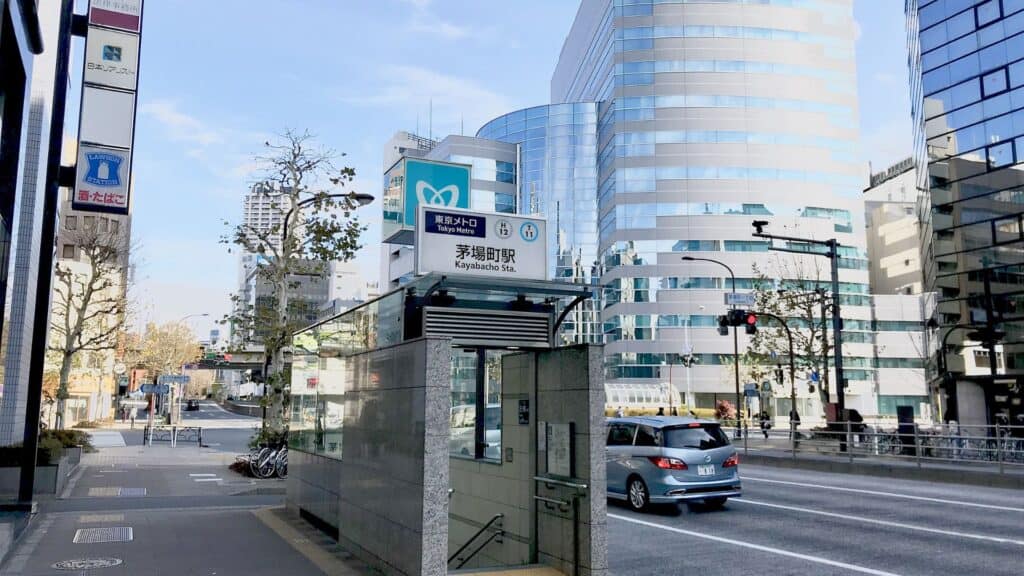
Japan’s Wall Street with the Tokyo Stock Exchange towering above it. It is full of offices of securities firms. Surrounded on all sides by rivers, Shinkawa, also known as Reigishima, has many condominiums and apartments where residents live. The financial and residential blend mirrors Edogawa’s diverse neighbourhoods.
Ningyocho 人形町
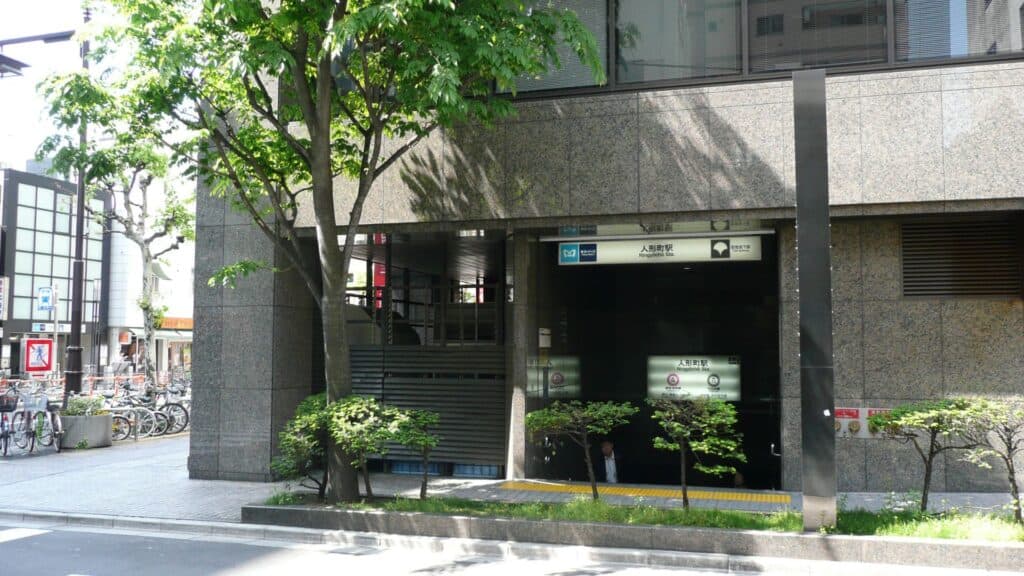
The former Yoshiwara, the origin of the Yoshiwara brothels, was once located here. It is an oasis for businessmen who work in Nihonbashi, with a high concentration of restaurants that serve as hideouts for adults. Surprisingly, the streets are still lined with narrow row houses in an old back-alley landscape.
Amazake Yokocho, where the ladies who commute to the Meiji-za Theatre stroll about. The special sukiyaki bento box at Imahan Ningyocho, a restaurant frequented by doctors and executives, adds to the area’s charm, much like the traditional eateries in Edogawa.
Kodenmacho 小伝馬町
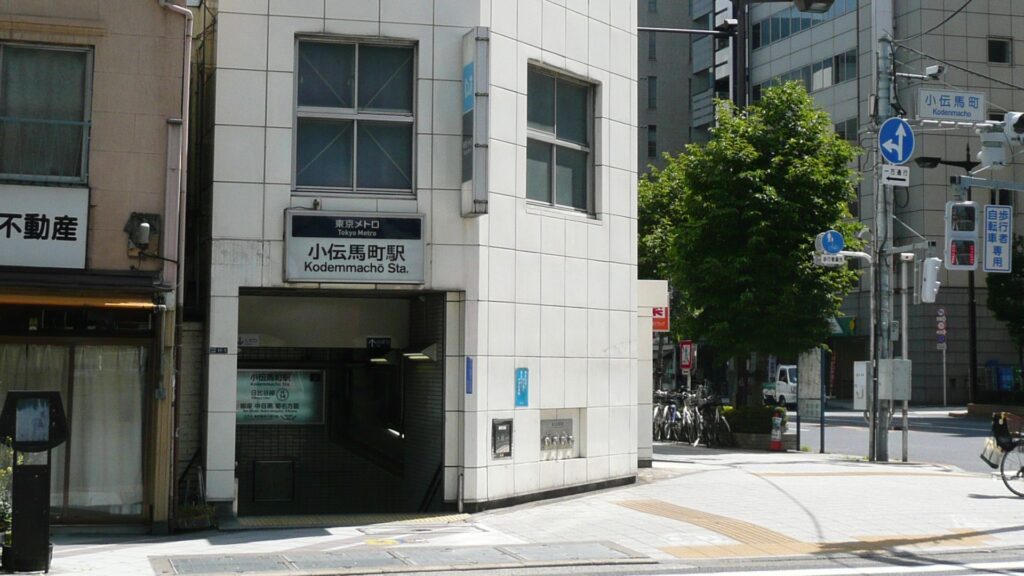
Jushikouen in front of the station is the site of the former Denmacho prison house, and Daianrakuji Temple is the site of an execution site, where Shoin Yoshida was executed. The area’s historical significance is similar to landmarks found in Edogawa.
Along Other Lines
Ginza 1-chome 銀座一丁目

A station on the outskirts of Ginza used by Yurakucho Line users. This is the closest station to the Okuno Building, a superb vintage apartment building built in 1932, and Ginza Yu, a public bathhouse. The vintage appeal of this area is reminiscent of Edogawa’s historic sites.
Shintomicho新富町
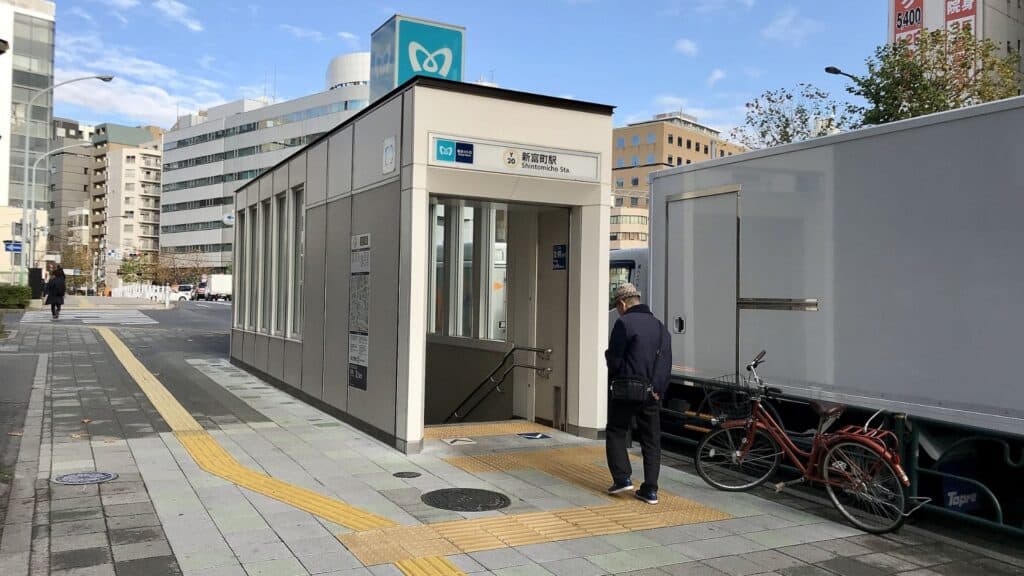
A vacant area surrounded by Ginza, Tsukiji, and Hatchobori. The Chuo Ward Office is the nearest station. The blend of administrative and commercial spaces is similar to Edogawa’s layout.
Tsukishima 月島

Tsukudukushima, where the descendants of fishermen who saved Ieyasu’s life and were brought here from Osaka, live, has also become a crowded area of townhouses. It is the former “Ishikawajima Jinshoku Yoroba,” a rehabilitation facility for criminals in the Edo period. The area’s transformation over time mirrors Edogawa’s growth.
Kachidoki 勝どき
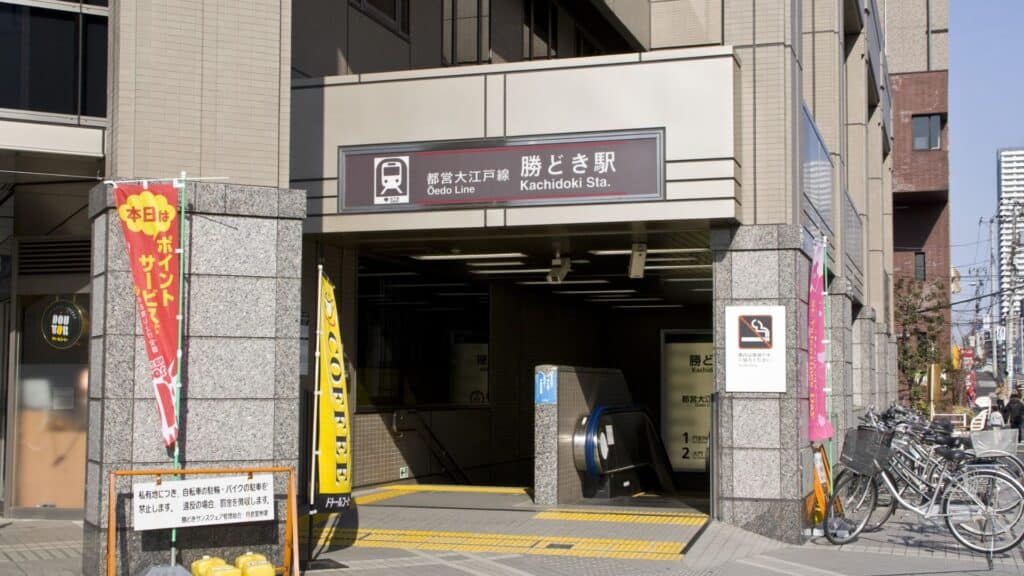
Like its neighbour Tsukishima, Kachidoki is a reclaimed island with a high concentration of narrow tenements. After the opening of the Oedo Line, it has transformed into an area of many tower blocks. Crossing the Kachidokibashi Bridge, Ginza is just a stone’s throw away, and many wealthy celebrities are moving to the area one after another. This rapid development is akin to changes seen in Edogawa.
Suitengumae 水天宮前
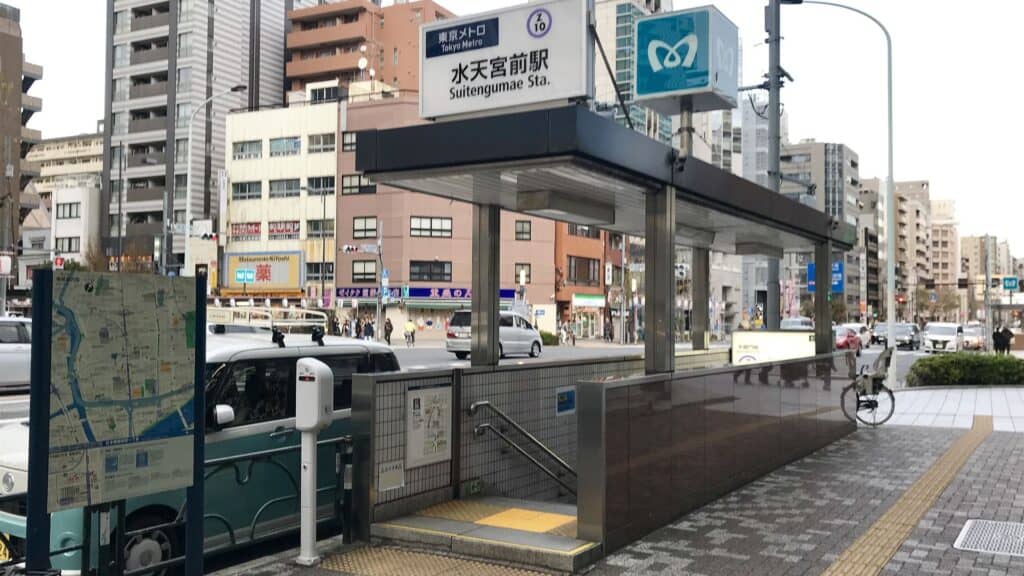
This station has long been the last stop on the Hanzomon Line. It is famous for Suitengu Shrine, where pregnant women from all over the Tokyo metropolitan area come to pay their respects. The cultural significance of this shrine is similar to Edogawa’s spiritual sites.
Hamamacho 浜町
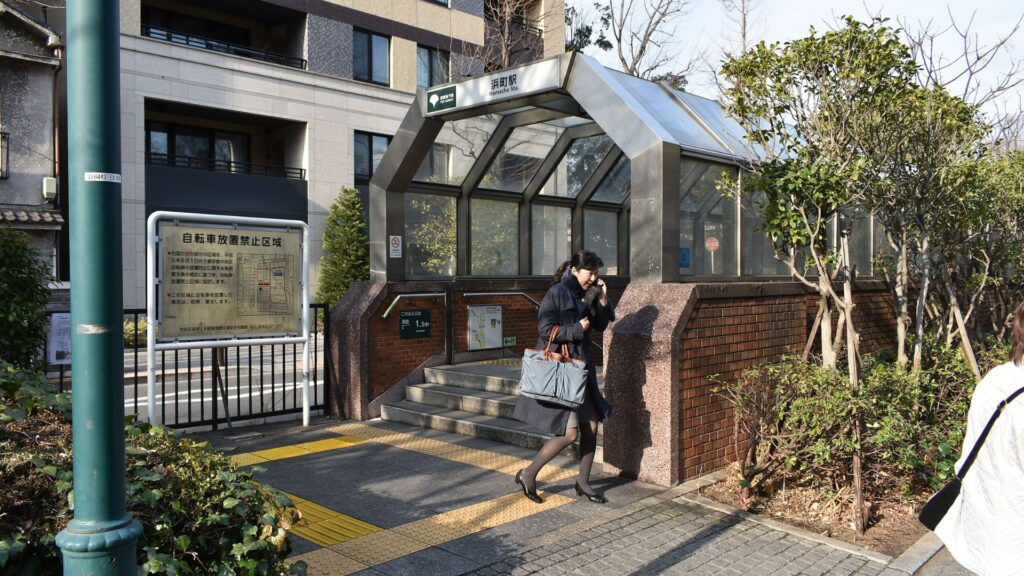
On the eastern edge of the Nihonbashi area. Meiji-za Theatre and Nihonbashi Hamamachi Park, where legions of ladies who love traditional arts gather, are located here. Sometimes, you will find crowds gathering here to play Pokémon Go. This mix of tradition and modernity is reminiscent of Edogawa’s community spaces.
Bakurocho, Bakuro-Yokoyama, Higashi-Nihonbashi 馬喰町・馬喰横山・東日本橋
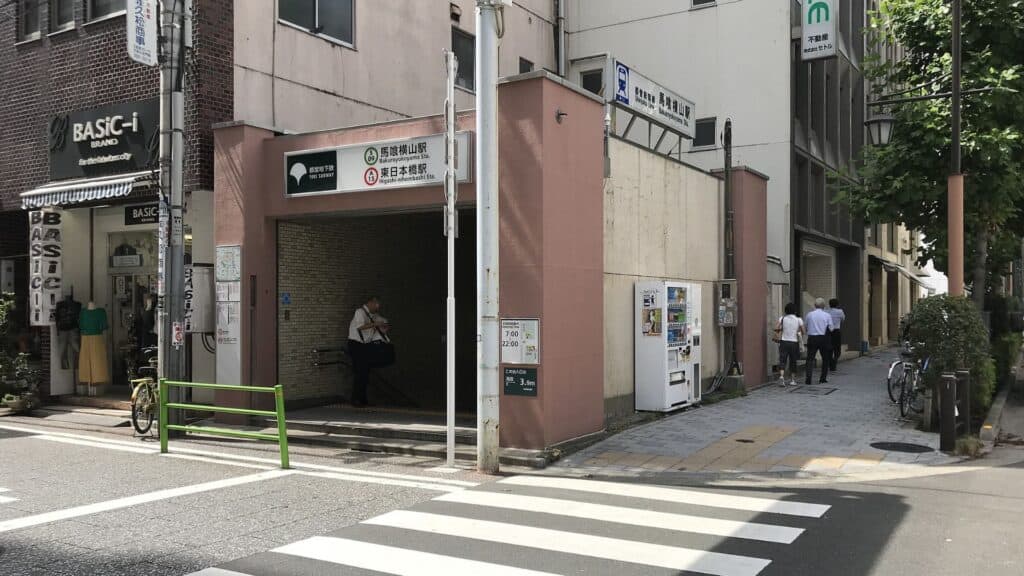
The Bakuro-Yokoyama textile wholesale district is one of the most famous in Tokyo. Although it is a transfer station, the JR Sobu Rapid Line, Toei Asakusa Line, and Toei Shinjuku Line have different station names.
The rows of barracks-like stores and houses above the Hamachigawa River, which was reclaimed after World War II, used to be a spectacular sight, but in recent years they have been replaced by condominiums and other buildings and are disappearing. This redevelopment is similar to efforts seen in Edogawa.
What to Do in Chuo Ward
Kabuki-za Theatre 歌舞伎座
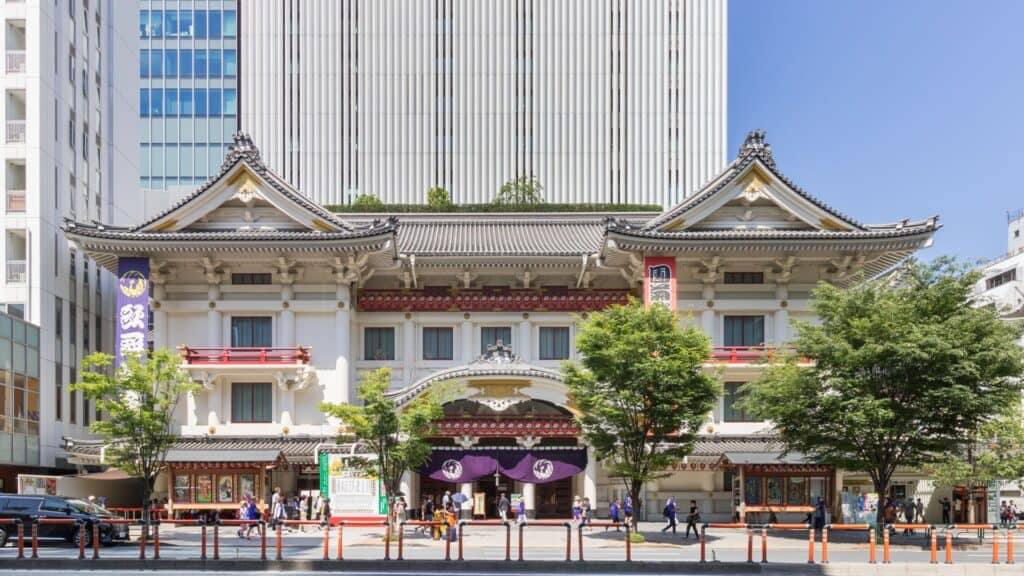
The Kabuki-za Theatre is located in Ginza, Chuo-ku, Tokyo. Since its opening in 1889, the theatre has been destroyed by fire, restored, reconstructed, and renovated to meet the needs of the times, culminating in the completion of the current fifth Kabuki-za theatre. It offers a variety of seat types from first-floor plank seats to third-floor seats, as well as the popular “one-act viewing” on the fourth floor, where you can enjoy watching your favourite act.
The tiled roof, balustrade, and other Japanese-style features of the exterior are in perfect harmony with the Kabuki-za Tower in the background and the streetscape of Ginza. The basement of the Kabuki-za is home to Kobikicho Plaza, where souvenir shops and restaurants are located. This traditional atmosphere is similar to the cultural richness of Edogawa.
Find out more about Kabuki-za Theatre here on Google maps.
Nihonbashi Bridge 日本橋
Nihonbashi Bridge is a stone double-arch road bridge connecting Nihonbashi Muromachi 1-chome and Nihonbashi 1-chome, and it is designated as a National Important Cultural Property. Since its construction at the opening of the Edo shogunate, the bridge has been repaired and rebuilt about 20 times.
The inscription of “Nihonbashi” on the bridge pillars was written by Yoshinobu Tokugawa, the 15th shogun of the Edo Shogunate. The historical significance of Nihonbashi Bridge is akin to the heritage sites found in Edogawa.
Find out more about Nihonbashi Bridge here on Google maps.
Shinbashi Enbujo 新橋演舞場
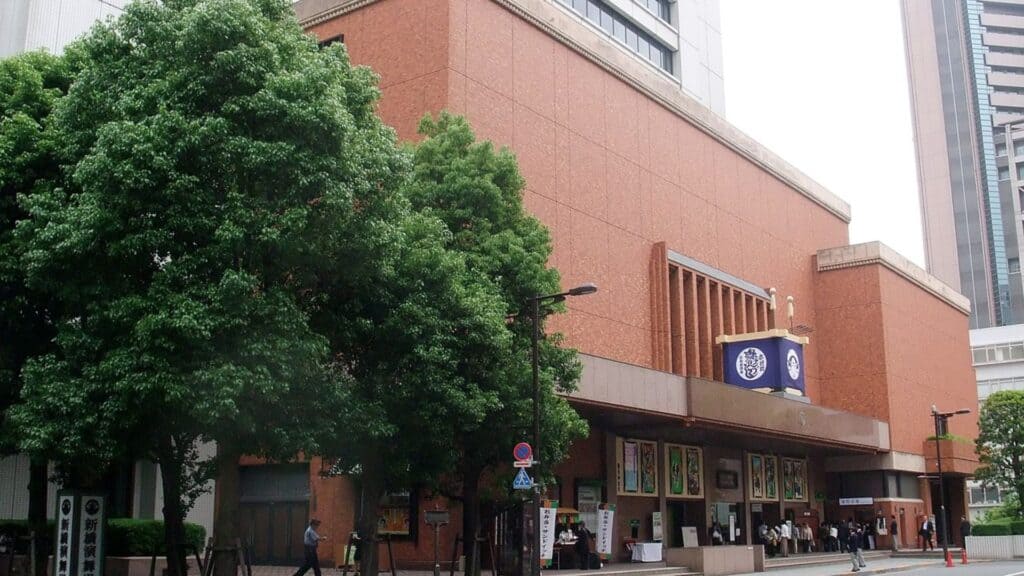
Built in 1925, Shinbashi Enbujo is located in Ginza, Chuo-ku, Tokyo. It was built as a place to showcase the skills of Shinbashi geigi and currently hosts a wide variety of performances centring on kabuki, shinpa, and shinki gekijo (new plays).
The Shinbashi Geigi “Azuma Odori,” held for four days every May, is popular as a springtime tradition in Tokyo, offering a glimpse of the geisha world, which is not open to the public at first glance. The theatre also offers a variety of boxed lunches and a cafeteria menu where visitors can enjoy the traditions of the Shinbashi Hanayagi world. This traditional theatre experience parallels the cultural events celebrated in Edogawa.
Find out more about Shinbashi Enbujo here on Google maps.
Meijiza 明治座
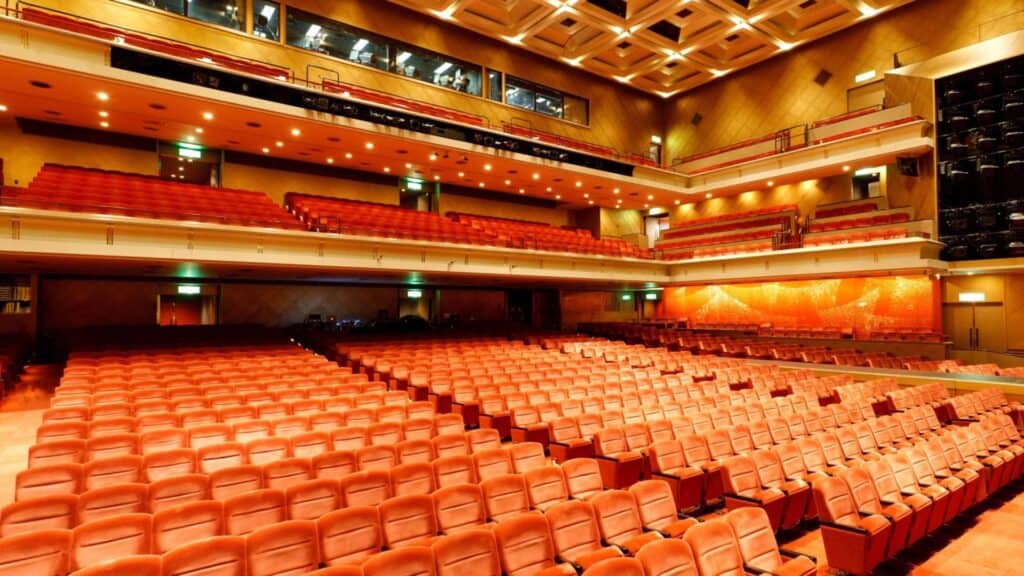
Located right next to Exit A2 of Hamacho Station, Meijiza has been a longtime favourite since its construction in 1873. Widely known as a hall of fame for kabuki and new school plays, it now hosts a variety of performances, including song shows, contemporary plays, and musicals.
The theatre retains the atmosphere of a Japanese-style building while blending in with the modern exterior of the Hamacho Centre Building. Inside, there are many facilities to enjoy between acts, including a coffee shop, lounge, and long-established Japanese confectionery store.
The “makunouchi bento” (boxed lunch in the curtain), a traditional Meijiza flavour, is one of the best parts of the theatre experience. This blend of old and new is much like the evolving character of Edogawa.
Find out more about Meijiza here on Google maps.
Tokyu Plaza Ginza 東急プラザ 銀座

Tokyu Plaza Ginza is a commercial facility facing the Sukiyabashi intersection in Ginza. It opened in 2016 as a new landmark in Ginza. The building has an impressive exterior with a motif of Edo faceting, a traditional craft, and is equipped with a comfortable lounge where visitors can freely relax and a rooftop terrace.
The facility features a variety of stores, mainly fashion, but also general merchandise, duty-free stores, and restaurants. The fashion select store “HINKA RINKA,” targeting adult women on the 3rd to 5th floors, is also very popular. The basement floor is directly connected to Ginza Station. The innovative design and retail experience are similar to modern developments in Edogawa.
Find out more about Tokyu Plaza Ginza here on Google maps.
Mitsukoshi Ginza 銀座三越

Opened in 1930, Mitsukoshi Ginza is the flagship store of the Mitsukoshi department store, which traces its roots to the kimono store “Echigoya,” founded in 1673. The 16 floors (4 below ground and 12 above ground) are home to a wide variety of stores, including more than 200 women’s fashion brands, one of the largest cosmetics floors in the Ginza area, as well as speciality stores selling men’s items, food, and sweets. The restaurant floor, which offers a wide variety of Japanese, Western, Chinese, and ethnic cuisines, is also popular. The expansive retail options are reminiscent of the bustling markets in Edogawa.
Find out more about Mitsukoshi Ginza here on Google maps.
Koami-jinja Shrine 小網神社
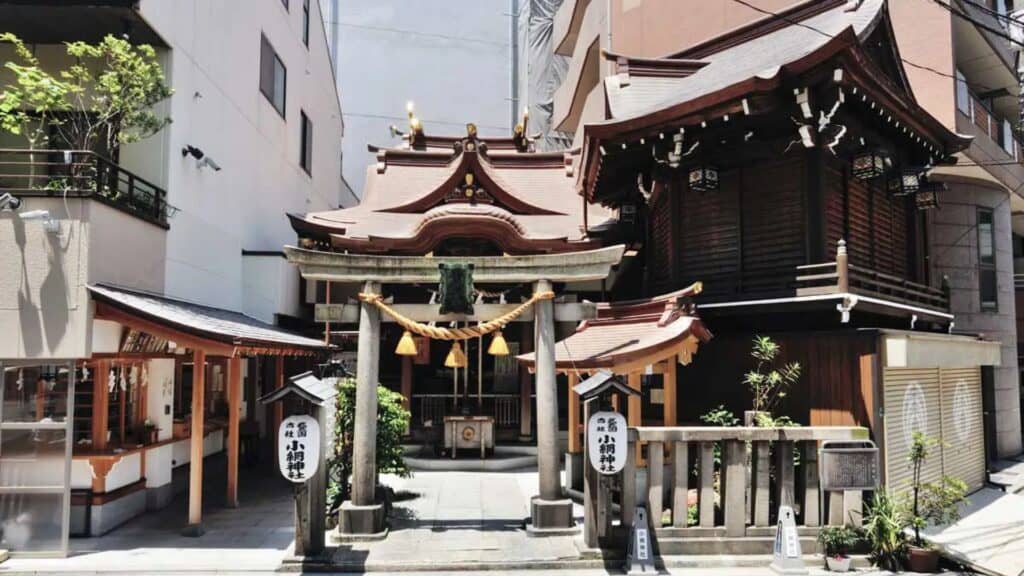
Koami Shrine is famous for its “Sennarai-benten,” or “Senninai-benten,” a goddess of luck and protection from bad luck. The shrine, located in Nihonbashi, Chuo-ku, Tokyo, is popular with a constant stream of worshippers. Inari-san is enshrined as the deity of the shrine and has long been worshipped as the “god of good luck and good luck repelling bad luck.”
The shrine is also home to the “Tokyo Senarai Benten,” which is said to bring good fortune by purifying money at the “Senarai no Ii” well, as well as statues of the Seven Gods of Good Fortune and Fukurokuju, who are said to bestow virtues. The shrine’s significance and cultural practices are similar to the spiritual traditions of Edogawa.
Find out more about Koami-jinja Shrine here on Google maps.
Hamarikyu Gardens 浜離宮恩賜庭園

Located in Chuo-ku, Tokyo, Hamarikyu Gardens features a tidal pond. The tidal inlet refers to a style of pond design in which seawater is drawn in to change the appearance of the pond using the ebb and flow of the tide. The tidal pond and the two duck ponds are representative of the Daimyo Gardens of the Edo period.
On the middle island of the pond, there is a “Nakajima no Ochaya” where tea and sweets are served. Cherry blossoms in spring and cosmos and autumn leaves in fall are beautiful scenes you can enjoy here. The seasonal beauty of the gardens is akin to the natural attractions in Edogawa.
Find out more about Hamarikyu Gardens here on Google maps.
Suitengu Shrine 水天宮
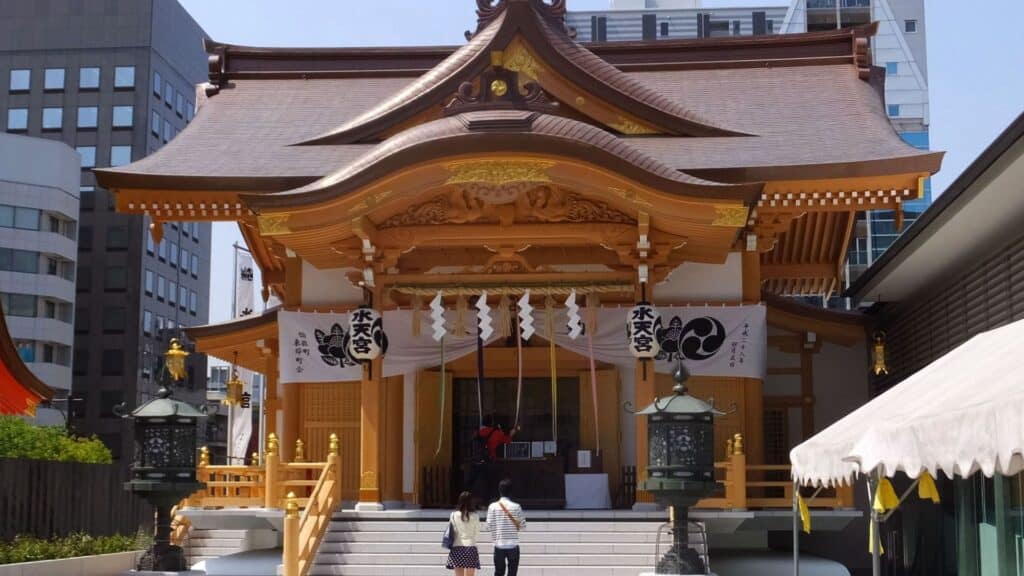
Suitengu is a branch shrine of Kurume Suitengu located in Kurume City, Fukuoka Prefecture, and is widely known as a deity for safe childbirth and childbirth. The Arima family, the feudal lords of Kurume who had revered Kurume Suitengu for generations, originally invited a branch of the shrine to their residence in Edo (Tokyo). The shrine is constantly visited by worshippers praying for easy childbirth and for the birth of their children.
Within its precincts, there are statues of “Kippo Inu,” or “baby dogs,” which bring good luck if you stroke your zodiac sign, as well as a statue of a kappa parent and child. In addition to amulet charms for easy childbirth, the cute ema (votive picture tablet) of a father and child dog is also popular.
The annual festival is held on 5 May every year. The shrine’s popularity and cultural significance are similar to Edogawa’s revered shrines.
Find out more about Suitengu Shrine here on Google maps.
Ginza Six
Ginza Six is the largest commercial facility in the Ginza area where world-class luxury brands and noteworthy gourmet foods gather. The building has 13 floors above ground and 6 floors below, housing over 240 stores. The atrium in the centre of the building is a space where installations by world-renowned artists are exhibited. Ginza Six attracts a great deal of attention each time an exhibit changes.
The building is home to stores in a variety of genres, including fashion, lifestyle, and food, and there are many programmes and items that can only be found here. The diversity of Ginza Six is similar to the varied attractions in Edogawa.
Find out more about Ginza Six here on Google maps.
Harumi Triton Square 晴海トリトンスクエア

Harumi Triton Square is a commercial complex located in Harumi, Chuo-ku, Tokyo. The site consists of three office towers, a shopping mall, various services, cultural facilities, and residences. The shopping mall, inspired by the streets of southern Europe, offers cafes & restaurants, fashion, beauty salons, clinics, and other stores necessary for daily life.
There is also a plaza blessed with beautiful flowers and trees, providing a place of relaxation for the neighbourhood and office workers. The integration of commercial and residential spaces at Harumi Triton Square is similar to developments in Edogawa.
Find out more about Harumi Triton Square here on Google maps.
Yaesu Shopping Mall 八重洲地下街
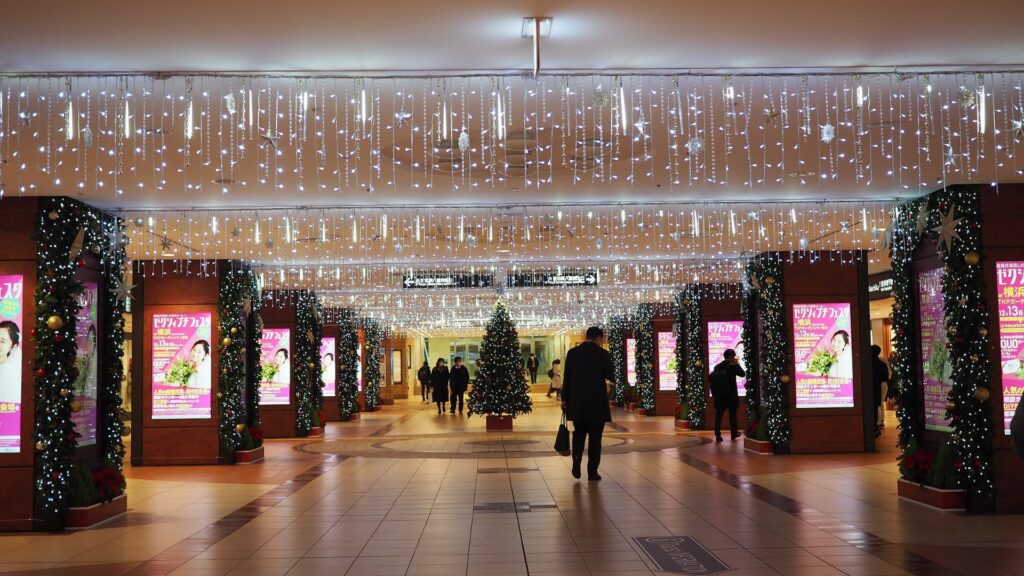
Yaesu Shopping Mall is one of the largest shopping malls in Japan, located underground at the Yaesu Exit of Tokyo Station. It is lined with about 180 stores, including restaurants, cafes, fashion goods, and clinics. The huge shopping mall is not only directly connected to Tokyo Station but also has a parking lot directly accessible from the Tokyo Metropolitan Expressway.
Known affectionately as “Yaetica,” it has many stores that will tickle the fancy of adults, including good old-fashioned restaurants, fragrance stores, galleries, and stores specialising in Western liquors. The extensive shopping options are akin to the diverse retail experiences in Edogawa.
Find out more about Yaesu Shopping Mall here on Google maps.
Mitsui Memorial Museum 三井記念美術館
Mitsui Memorial Museum is a stately Western-style building representing Japan in the early Showa period and is designated as a National Important Cultural Property. The museum opened in 2005 as a relocation of the “Mitsui Bunko Annex” in Nakano Ward.
The museum houses a number of valuable artworks collected by the Mitsui family over a period of more than 300 years since the Edo period. The preservation of historical artefacts at the Mitsui Memorial Museum is similar to the cultural preservation efforts in Edogawa.
Find out more about Mitsui Memorial Museum here on Google maps.
Haibara 榛原(はいばら) 日本橋本店
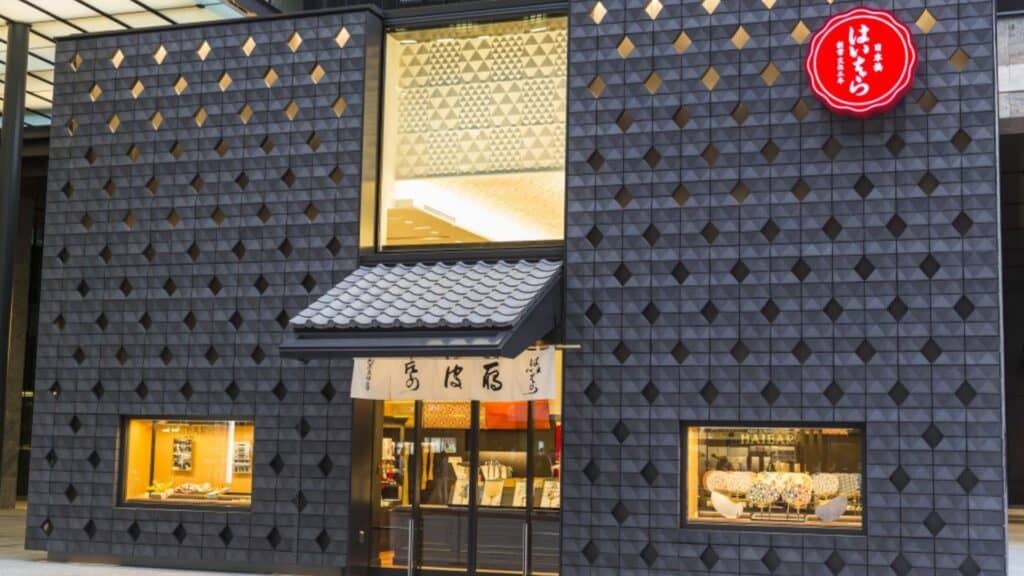
Founded in 1806, Haibara has been offering a “lifestyle with washi” for more than 200 years. It is famous for selling gampi paper, which is smooth to the touch, to the common people of Edo. The store carries a wide variety of washi products, including washi paper, Japanese accessories, letterheads, money envelopes, and gift bags, bringing the style of the Edo period to the present day.
Some of the works of modern painters such as Takehisa Yumeji, Shibata Zeshin, and Kawanabe Kyosai are also used in their products. The unique blend of tradition and modernity at Haibara is akin to the artistic traditions in Edogawa.
Find out more about Haibara here on Google maps.
Find out more about Haibara here on Google maps.
Events in Chuo Ward
Doburoku Festival どぶろく祭
The Doburoku Festival, held annually in Chuo Ward, celebrates the traditional Japanese unrefined sake known as doburoku. During this vibrant event, participants can enjoy the unique, cloudy beverage, which is often freshly brewed for the occasion.
The festival features a series of rituals and performances, reflecting the deep cultural heritage of the area. Just as Edogawa embraces its own cultural festivals, the Doburoku Festival offers a delightful blend of tradition and community spirit, making it a must-visit for locals and tourists alike.
Suitengu Grand Festival 水天宮例大祭
The Suitengu Grand Festival, celebrated at Suitengu Shrine in Chuo Ward, is a grand annual event dedicated to prayers for safe childbirth and the well-being of children. Held every May, the festival features colourful parades, traditional music, and a variety of stalls offering local delicacies and charms.
This vibrant celebration draws families from all over Tokyo, much like the community-focused festivals in Edogawa, creating a joyous and hopeful atmosphere for all who attend.
Koami Shrine Grand Festival 小網神社大祭
The Koami Shrine Grand Festival, held in Chuo Ward’s historic Nihonbashi area, is a significant event that honours the shrine’s deities of luck and protection. This lively festival includes traditional ceremonies, parades with mikoshi (portable shrines), and performances that highlight the rich cultural traditions of the region.
Similar to the spirited festivals in Edogawa, the Koami Shrine Grand Festival is a time for community gathering, celebration, and the sharing of cultural heritage.
Sumiyoshi Shrine Grand Festival 住吉神社例大祭
The Sumiyoshi Shrine Grand Festival in Chuo Ward is a traditional celebration that pays homage to the deities of the sea and safe travel. This event features vibrant processions, traditional dances, and various ceremonial rites that attract both locals and visitors. Much like the festive events held in Edogawa, the Sumiyoshi Shrine Grand Festival offers a glimpse into the region’s rich cultural tapestry, providing a memorable experience filled with history, tradition, and community spirit.
Recommended Accommodations in Chuo Ward
Sakura Cross Hotel Tokyo Kayabacho (3 Stars)
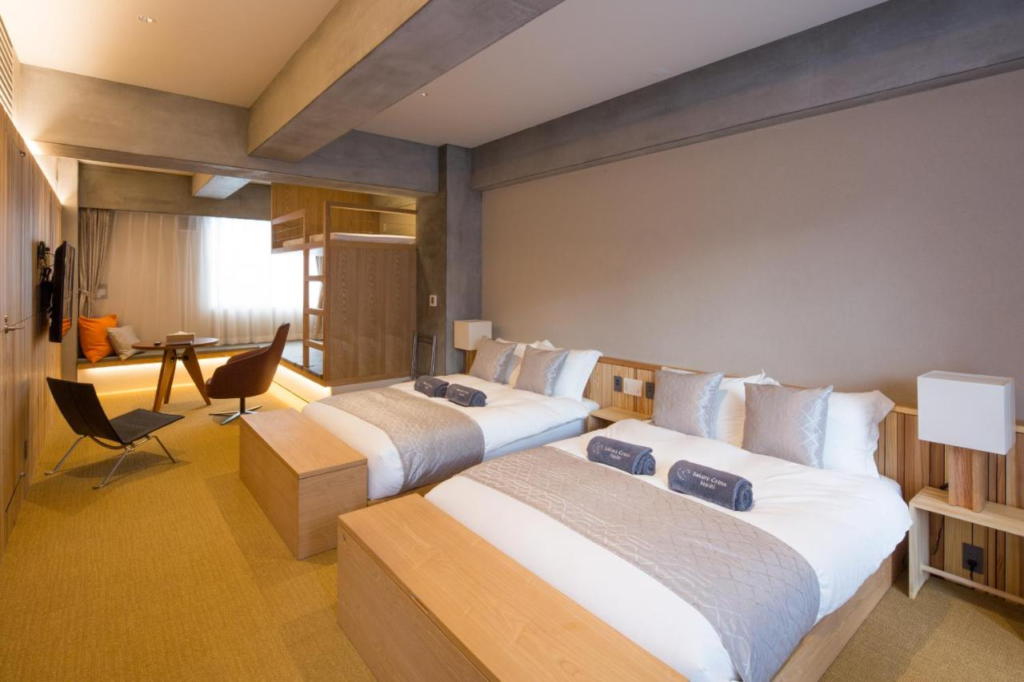
Located in Tokyo, 300 m from Zuiken Kawamura Former Residence Place Monument, Sakura Cross Hotel Tokyo Kayabacho provides air-conditioned rooms with free WiFi. The property is around 500 m from Oiwa Inari Shrine, 600 m from Bank of Japan Origin Place Monument, and 700 m from Takao Inari Shrine. Each room is equipped with a balcony. The convenient location and amenities are similar to those found in Edogawa.
TSUKI Tokyo (4 Stars)

Conveniently set in the Chuo Ward district of Tokyo, TSUKI Tokyo is located 3.6 km from National Diet Building, 5 km from Ryogoku Kokugikan National Sumo Stadium, and 4 km from Chidorigafuchi. Japan Imperial Palace is 4.1 km from TSUKI Tokyo, while Tokyo Tower is 4.4 km away. The modern design and facilities at TSUKI Tokyo are similar to accommodations in Edogawa.
CITAN Hostel (2 Stars)
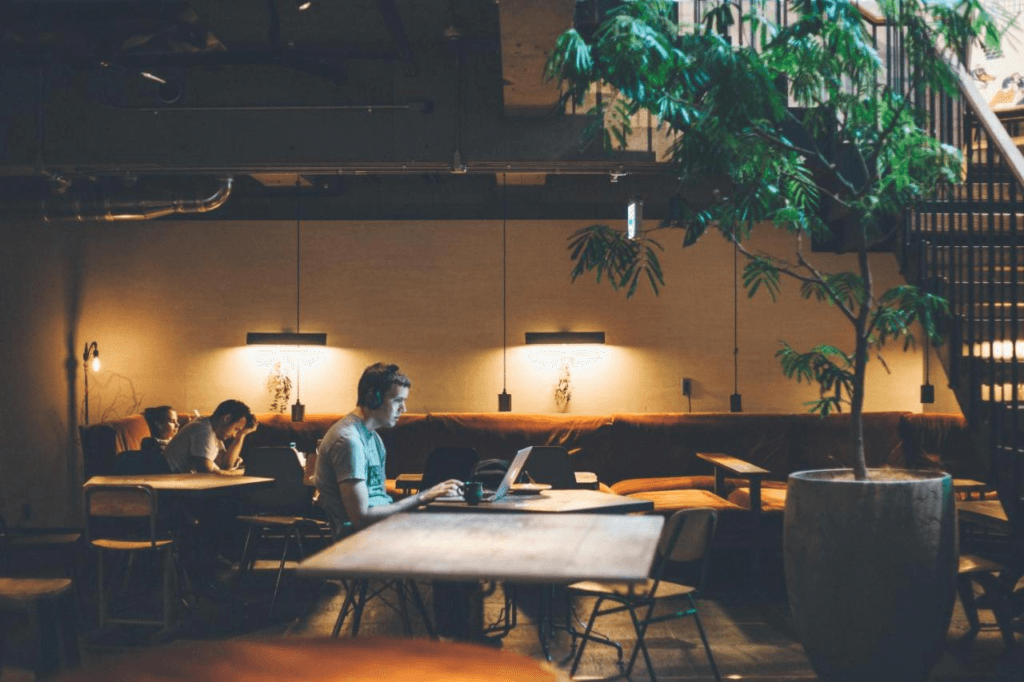
Located in Tokyo, 600 m from Suginomori Shrine, CITAN Hostel provides air-conditioned rooms and a bar. Popular points of interest near the accommodation include Jisshi Park, Revival Monument of Japanese Traditional Chinese Medicine, and Takarada Ebisu Shrine. The budget-friendly and convenient stay at CITAN Hostel is akin to hostels in Edogawa.
Mitsui Garden Hotel Nihonbashi Premier (4 Stars)

Open from September 2018, located within an 11-minute walk from Tokyo Station Nihonbashi Exit and 1.9 km from The Imperial Palace, Mitsui Garden Hotel Nihonbashi Premier features accommodation with a bar. The property is directly connected to Shin-Nihombashi Station and Mitsukoshimae Station. The seamless connection to public transport is similar to hotels in Edogawa.
Mimaru Tokyo Nihonbashi Suitengumae
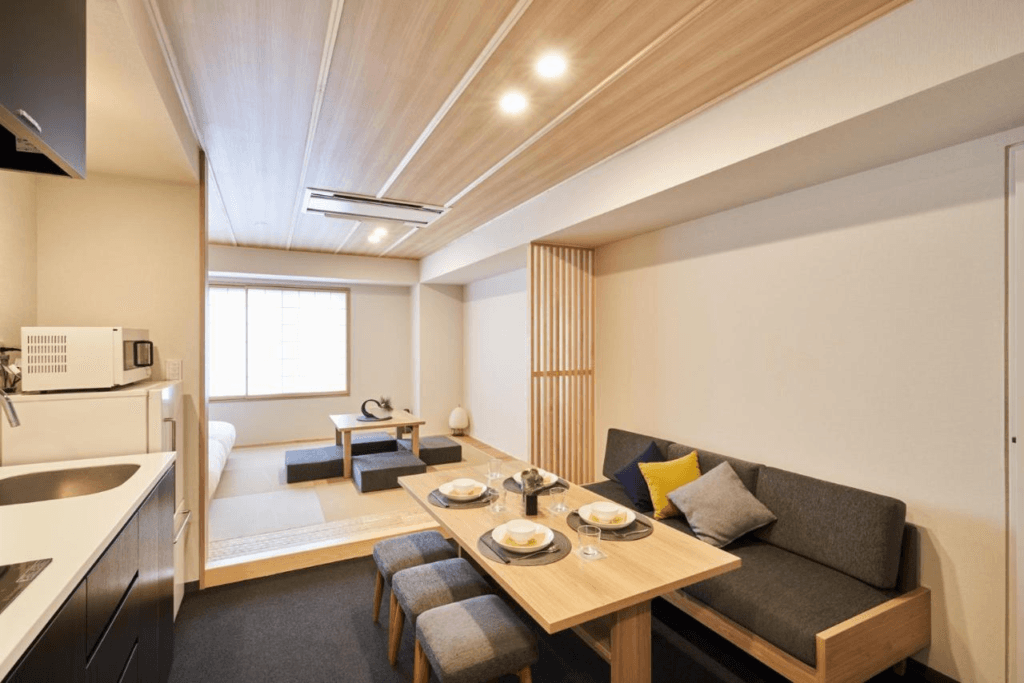
Located within 2 km of Edo Tokyo Museum and 2 km of Marunouchi Building, Mimaru Tokyo Nihombashi Suitengumae offers free WiFi throughout the property. The property is situated 2.3 km from Kachidoki Bridge and 3 km from Japan Imperial Palace. The family-friendly accommodations at Mimaru Tokyo Nihonbashi Suitengumae are similar to those in Edogawa.
Hyatt Centric Ginza Tokyo (5 Stars)
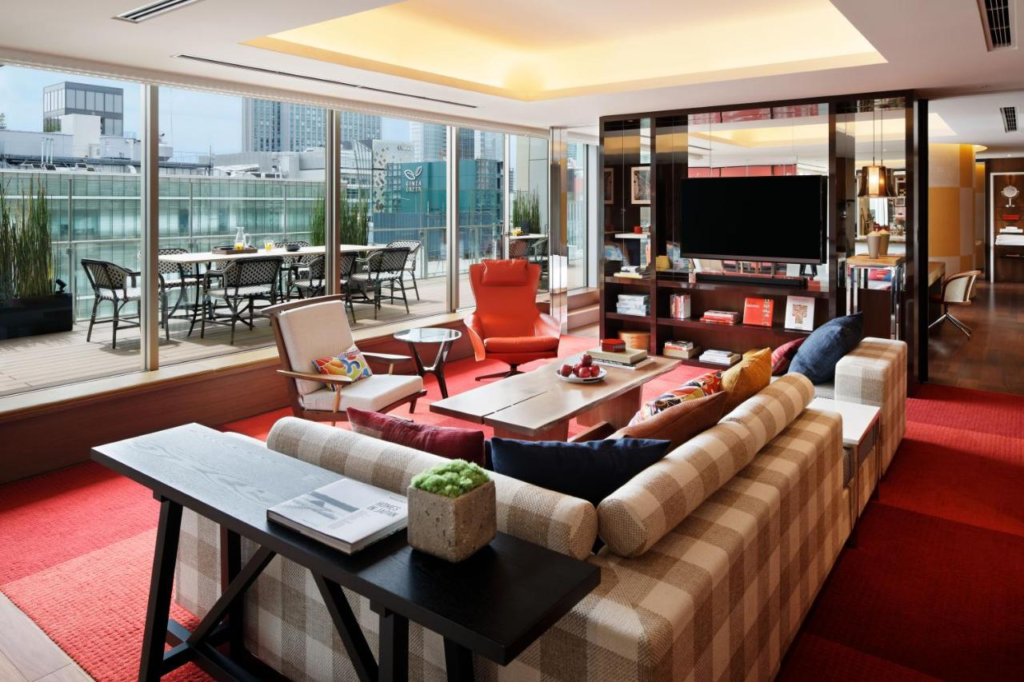
Kabuki-za is an 8-minute walk from Hyatt Centric Ginza Tokyo. Hama-Rikyu Gardens is an 11-minute drive away. Guests can reach Omotesando and Shibuya within 20 minutes by train. The nearest airport is Tokyo Haneda International Airport, 13 km from the property. The luxurious experience at Hyatt Centric Ginza Tokyo is akin to high-end stays in Edogawa.
Hostel DEN (1 Star)
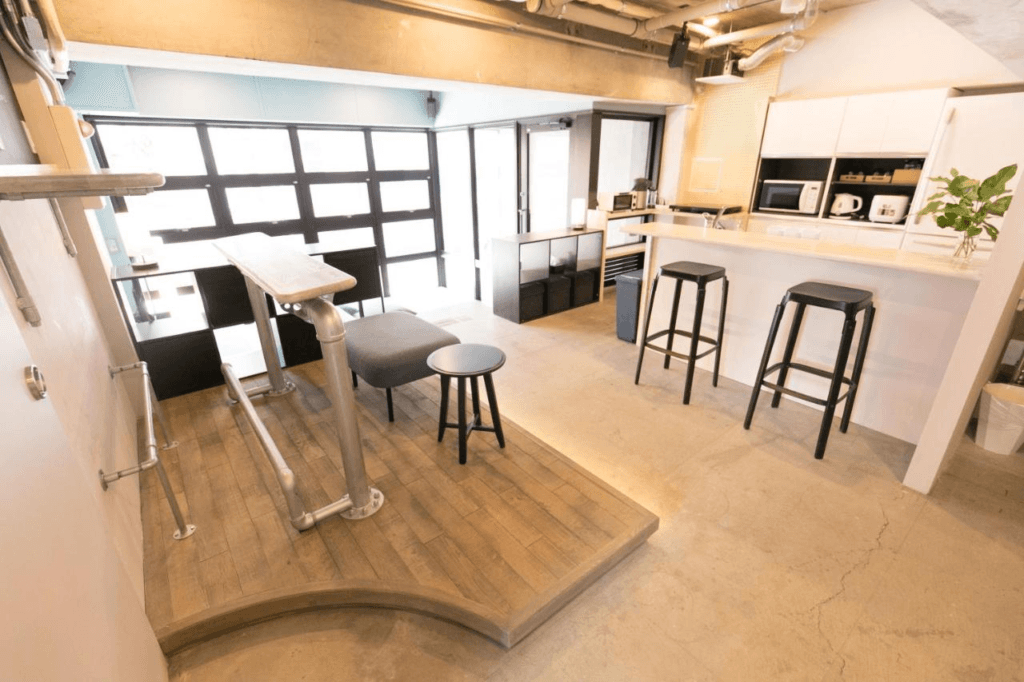
Set in Tokyo, Hostel DEN is a 19-minute walk from Marunouchi Building. All rooms feature a kitchen and a shared bathroom. Free WiFi is available. There is a prayer room at this accommodation. Edo Tokyo Museum is 1.8 km from the hostel. Tokyo Haneda International Airport is 15 km from the property. The budget-friendly and accessible stay at Hostel DEN is similar to hostels in Edogawa.
DDD Hotel (3 Stars)
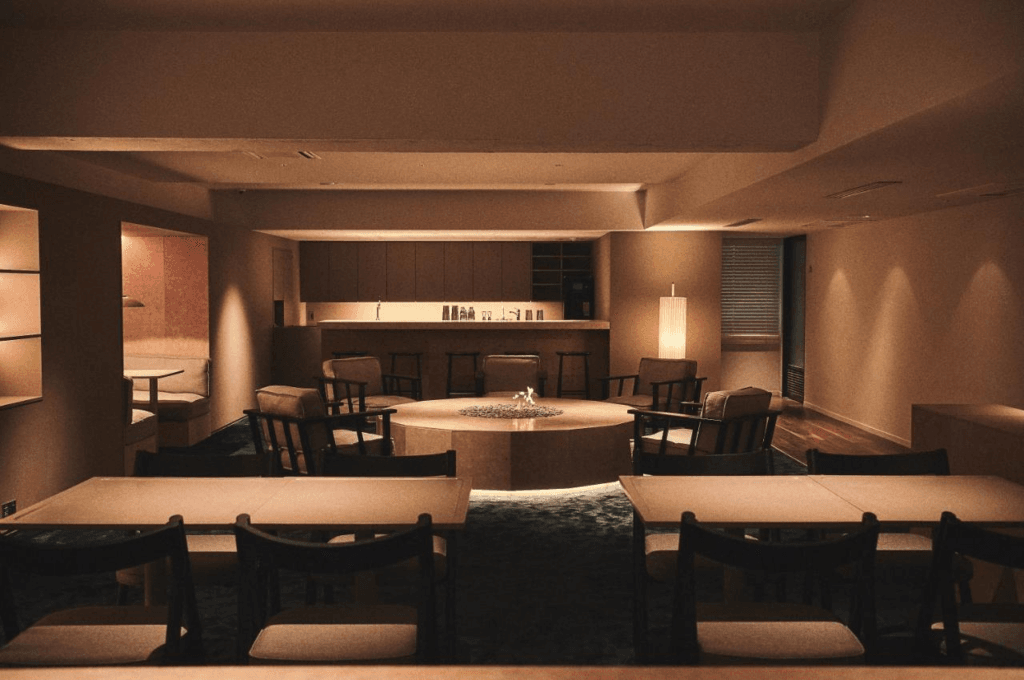
Conveniently set in the Chuo Ward district of Tokyo, DDD Hotel is located 300 m from Asakusa Mitsuke. A continental breakfast is available daily at DDD Hotel. Popular points of interest near the hotel include Ichogaoka Hachiman Shrine, Japan Stationery Museum, and Kusawakeinari Shrine. The convenient location and modern amenities are similar to hotels in Edogawa.
Obi Hostel (1 Star)
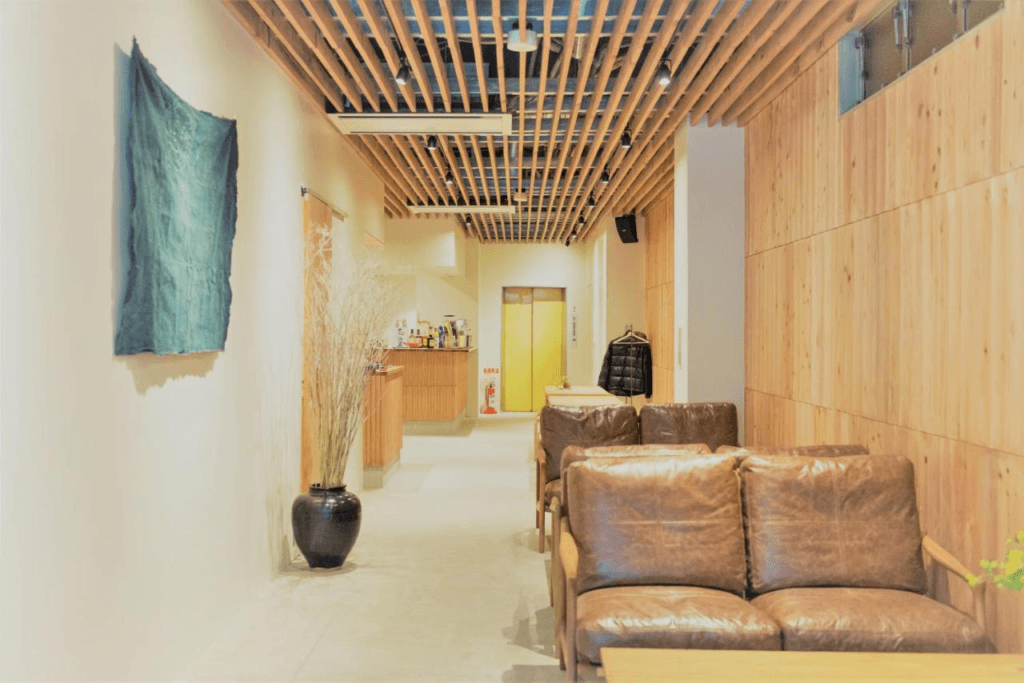
Opened in April 2017, Obi Hostel is conveniently situated a minute’s walk from Bakuro-yokoyama Subway Station and within a minute’s walk from Bakurocho Station A1 Exit. Direct trains are available from Haneda and Narita international airports to the nearest train station. Free WiFi access is offered throughout the entire property. The accessible location and amenities at Obi Hostel are similar to those in Edogawa.
Hotel Vista Tokyo Tsukiji (4 Stars)
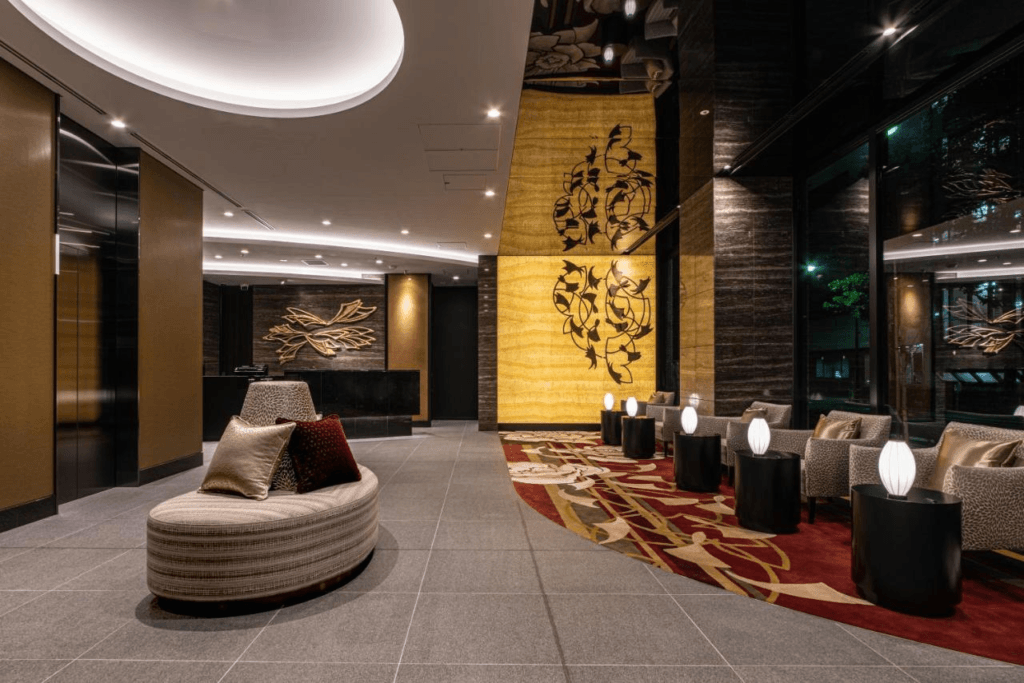
Conveniently located in the Chuo Ward district of Tokyo, Hotel Vista Tokyo Tsukiji is 90 m from Nihon Tenji Seitei no Chi, 300 m from Chirori Memorial, and 300 m from Shoyoji Temple. Popular points of interest near the accommodation include Hojuji Temple, Ginza Core Shopping Mall, and Namiyoke Inari Shrine. The convenient location and amenities are akin to hotels in Edogawa.
Explore the Heart of Tokyo’s Heritage
What do you think about Chuo Ward in Tokyo? This vibrant area, steeped in history and culture, offers a unique glimpse into the heart of Tokyo’s past and present. From the bustling streets of Ginza to the serene beauty of Hamarikyu Gardens, Chuo Ward is a blend of tradition and modernity that captivates visitors and locals alike.
The festivals, such as the Doburoku Festival and the Suitengu Grand Festival, showcase the rich cultural tapestry of the area, while historic sites like Nihonbashi Bridge and Kabuki-za Theatre connect you to Tokyo’s enduring legacy.
If you enjoy learning into the history and culture of Tokyo, Chuo Ward is an area you won’t want to miss. There is so much to explore and experience, from its iconic landmarks to its hidden gems. Whether you’re drawn to the high-end shopping of Ginza, the traditional performances at Shinbashi Enbujo, or the historical significance of Koami Shrine, Chuo Ward offers something for everyone.
If you’re planning a visit, be sure to refer back to this blog for insights and tips to make the most of your journey. Just as Edogawa showcases its own unique charm, Chuo Ward stands as a testament to Tokyo’s rich and diverse heritage.

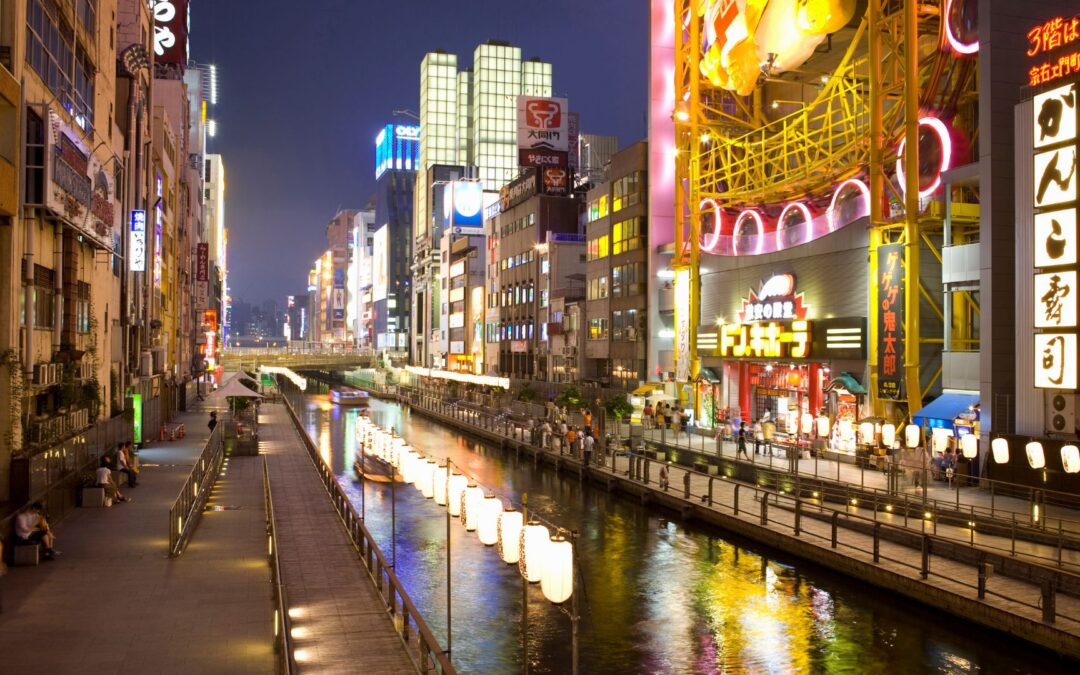
Recent Comments